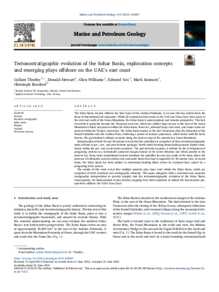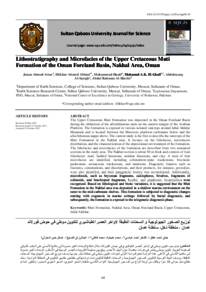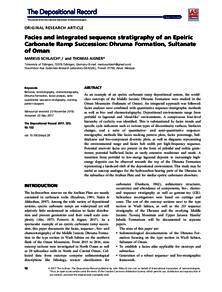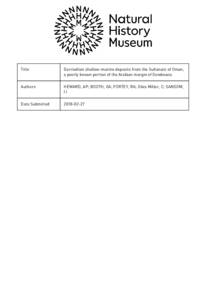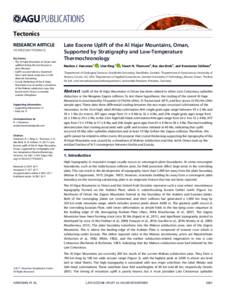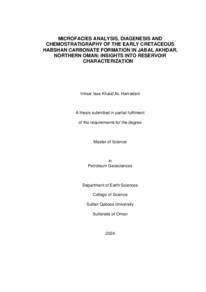وثيقة
Tectonostratigraphic evolution of the Sohar basin, exploration concepts and emerging plays offshore on the UAE's east coast.
المعرف
DOI: 10.1016/j.marpetgeo.2022.105807
المصدر
Marine and Petroleum Geology. v. 143, 105807
المساهمون
Stewart, Donald., مؤلف
Williams, Glen., مؤلف
Cox, Edward. , مؤلف
Sarssam, Mark., مؤلف
Kierdorf, Christoph., مؤلف
الدولة
Netherlands.
مكان النشر
Amsterdam
الناشر
Elsevier Ltd.
ميلادي
2022-09-01
اللغة
الأنجليزية
الموضوع
الملخص الإنجليزي
The Sohar Basin, located offshore the East Coast of the Arabian Peninsula, is an area that has seldom been the focus of international oil companies. While all commercial discoveries in the UAE and Oman have been made to the west and south of the Oman Mountains, the Sohar Basin is underexplored and remains prospective. This lack of activity is primarily because the Thamama reservoir, which has yielded huge success to the west of the Oman Mountains is likely not present within the Sohar Basin. However, potential traps, reservoirs, and source rocks are present within the Tertiary succession. The Sohar Basin formed in the late Cretaceous after the obduction of the Semail Ophiolite onto the Arabian Plate. Following a period of tectonic quiescence, which lasted until the Early Eocene, the gravitational collapse occurred along the eastern edge of the present-day Oman Mountains. Interpretation of both 2D and 3D seismic reveals that the subsurface is comprised of three tectonostratigraphic units, defined as pre-, syn-, and post-tectonic packages. North-South trending thrust faults generate distinct mini-basins within the pre- and syn-tectonic sequences. The post-tectonic sequence is defined by the development of prograding systems in a tectonically quiescent margin formed in the Lower Miocene and which persists to the present day. Deep-water depositional systems dominate the undrilled far-east and south of the basin where the presence of submarine canyon systems and associated basin floor fans is supported by 3D seismic data. In recent times, the Sohar Basin has been subject to extensional faulting likely driven by sediment load caused by a prograding delta system. The results of this work reveal that multiple untested play types exist within the Sohar Basin, which are comprised of both structural and stratigraphic elements. This paper integrates both a structural and sequence stratigraphic interpretation to provide insights into the tectonostratigraphic evolution of the Sohar Basin. Consequently, the fundamentals of play fairway mapping have been employed to unlock the hydrocarbon prospectivity offshore the UAE's East Coast.
ISSN
0264-8172
قالب العنصر
مقالات الدوريات

